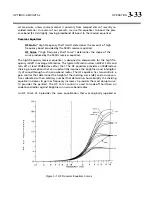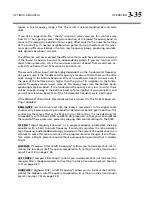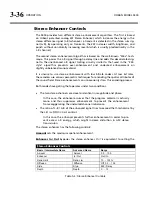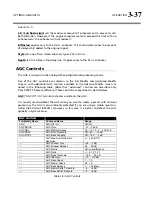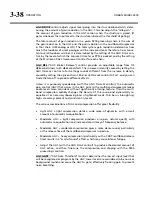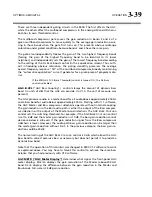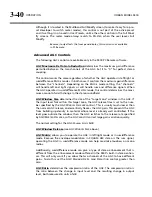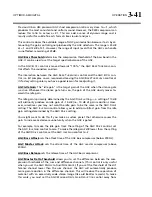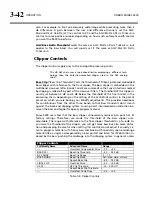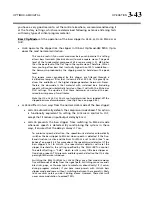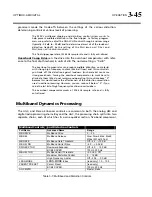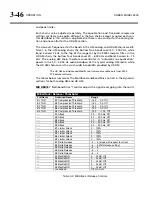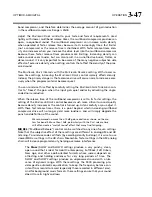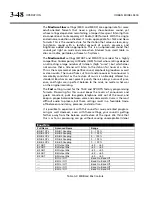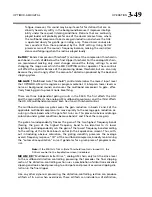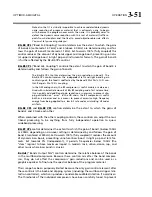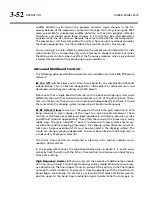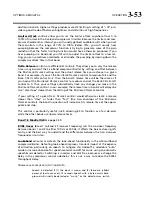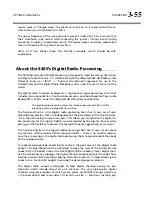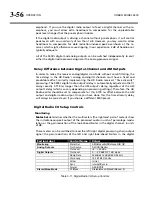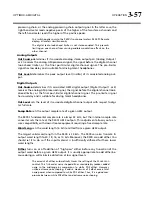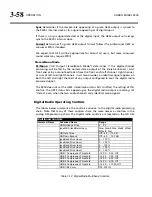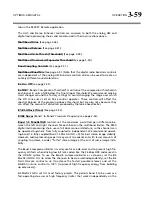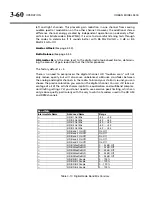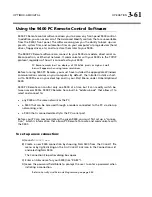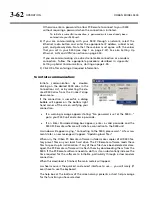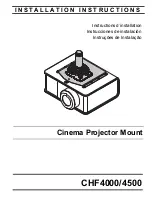
OPTIMOD-AM DIGITAL
OPERATION
3-47
band compressor, and therefore determines the average amount of gain reduction
in the multiband compressor. Range is 25dB.
Adjust the
M
ULTIBAND
D
RIVE
control to your taste and format requirements. Used
lightly with slower multiband release times, the multiband compressor produces an
open, re-equalized sound. The multiband compressor can increase audio density
when operated at faster release times because it acts increasingly like a fast limiter
(not a compressor) as the release time is shortened. With faster release times, den-
sity also increases when you increase the drive level into the multiband compressor
because these faster release times produce more limiting. Increasing density can
make sounds seem louder, but can also result in an unattractive busier, flatter, or
denser sound. It is very important to be aware of the many negative subjective side
effects of excessive density when setting controls that affect the density of the proc-
essed sound.
The
M
ULTIBAND
D
RIVE
interacts with the
M
ULTIBAND
R
ELEASE
setting. With slower re-
lease time settings, increasing the
M
ULTIBAND
D
RIVE
control scarcely affects density.
Instead, the primary danger is that excessive drive will cause noise to increase exces-
sively when the program material becomes quiet.
You can minimize this effect by carefully setting the
M
ULTIBAND
G
ATE
T
HRESHOLD
con-
trol to “freeze” the gain when the input gets quiet and/or by activating the single-
ended noise reduction.
When the release time of the multiband compressor is set to its faster settings, the
setting of the
M
ULTIBAND
D
RIVE
control becomes much more critical to sound quality
because density increases as the control is turned up. Listen carefully as you adjust it.
With these fast release times, there is a point beyond which increasing multiband
compressor drive will no longer yield more loudness, and will simply degrade the
punch and definition of the sound.
We recommend no more than 10 dB gain reduction as shown on the me-
ters for band 3. More than 10dB, particularly with the
F
AST
release time,
will often create a “wall of sound” effect that many find fatiguing.
MB REL
(“Multiband Release”) control can be switched to any one of seven settings.
Note that the subjective effect of these settings are different in analog AM and HD
listening. To minimize codec artifacts (by avoiding density build-up), it is wise to use
slower
MB
R
EL
settings in the HD chain. Meanwhile, faster settings in the AM analog
chain will increase program density, helping overcome interference.
The
Slow
(
SLOW
and
SLOW2)
settings produce a very punchy, clean,
open sound that is ideal for Adult Contemporary, Soft Rock, Soft Urban,
New Age, and other adult-oriented formats whose success depends on
attracting and holding audiences for very long periods of time. The
SLOW
and
SLOW2
settings produce an unprocessed sound with a nice
sense of dynamic range. With these settings, the 9400 processing pro-
vides gentle automatic equalization to keep the frequency balance con-
sistent from record to record (especially those recorded in different eras).
And for background music formats, these settings ensure that your sound
doesn’t lose its highs and lows.
Summary of Contents for Optimod-AM 9400
Page 1: ...Operating Manual OPTIMOD AM 9400 Digital Audio Processor Version 1 2 Software...
Page 7: ...Operating Manual OPTIMOD AM 9400 Digital Audio Processor Version 1 2 Software...
Page 52: ......
Page 204: ......
Page 232: ......
Page 260: ......
Page 261: ...OPTIMOD AM DIGITAL TECHNICAL DATA 6 29...
Page 267: ...OPTIMOD AM DIGITAL TECHNICAL DATA 6 35 CPU Module...
Page 273: ...OPTIMOD AM DIGITAL TECHNICAL DATA 6 41 RS232 BOARD PARTS LOCATOR...
Page 275: ...OPTIMOD AM DIGITAL TECHNICAL DATA 6 43 8300 POWER SUPPLY PARTS LOCATOR...
Page 284: ...6 52 TECHNICAL DATA ORBAN MODEL 9400 DSP BOARD PARTS LOCATOR DRAWING 32170 000 14...
Page 292: ...6 60 TECHNICAL DATA ORBAN MODEL 9400 DISPLAY BOARD PARTS LOCATOR...
Page 293: ...OPTIMOD AM DIGITAL TECHNICAL DATA 6 61 DISPLAY BOARD...

